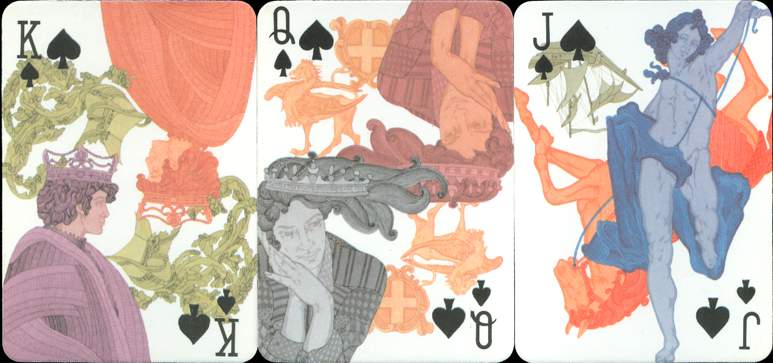
May 2011
It wasn't a slow month for decks. Packages kept coming in and there are a few still on their way. So that means that Ebay was our main source for new decks this month, in spite of the collectors meeting in the National Playing Card Museum in Turnhout, Belgium, which we attended. Miriam had just finished a 10 days treatment with antibiotics and was just well enough to come along. It was a pity that the meeting didn't attract many visitors from outside this time, so there was mostly trading between the dealing collectors. Of course it was nice to see all the familiar faces again, but we only brought home 5 new decks for our collection. This month there were also some nearby outdoor flea markets and the usual one in Utrecht, but all those didn't bring many new decks either.
So thanks to Ebay there was a good number to choose from again and it brought an interesting shortlist for the final choice. There was a 1930's pictorial souvenir deck from New Zealand, a Russian and a Swedish modern art deck, a nice French deck about the Sarkozy government and this deck. We chose this one because of the interesting design with an artistic interpretation of double imaged cards.
Here the images overlap each other, are done in different colours and in most cases present completely different images on each side. These aspects in design make the whole deck intriguing, as if it demands a search for the right interpretation of each card. In other words........ a true art deck...... and a just winner this month!

The deck was designed by Pier Canosa, an engraver and painter from Genova (Italy), and it was published as "Carte di Colombo" in commemoration of the 500th anniversary of the discovery of America. The deck was printed by Piemme Graphics in a limited edition. The original plates were destroyed on October 12th 1992, exactly 500 years after the first sighting of the new continent by Columbus. The deck is printed on rather thick card. Although on one of the extra cards it says that the edition is limited, the number of printed decks isn't mentioned anywhere.
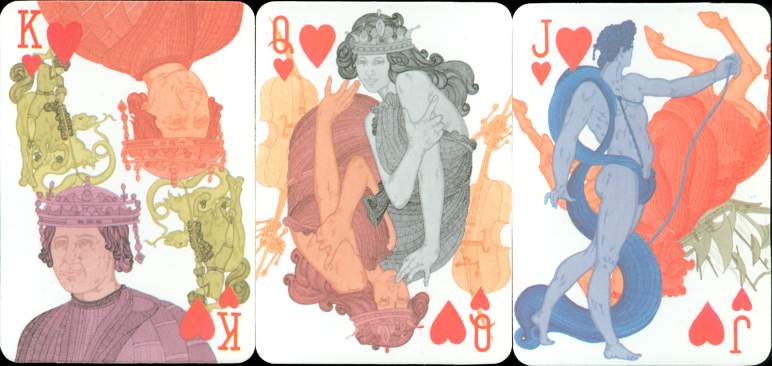
The only true double
images are found on almost all the Kings and Queens and the Ace of Hearts.
Exceptions here are the King of Spades and the Queen of Clubs, which seem to be
similar, but their robes have different lines on each side. The Jacks and other
aces begin to reveal the layout of the rest of the designs in this deck. All the
Jacks have the same three components: a character (classical hero, mediaeval
knight and page), a horse and a ship. Throughout the deck there are some other
recurrent components to be found, like St. George and the Dragon, the Griffin,
and of course the ships, no doubt the three that went on this expedition.
There is a big difference between the courts (+aces & joker) and the pips.
On the courts the designs are set against a plain white background, but on the
pips the whole card is used for the design. The characters and objects are set
against a coloured background with antique, decorative patterns. Check them out!
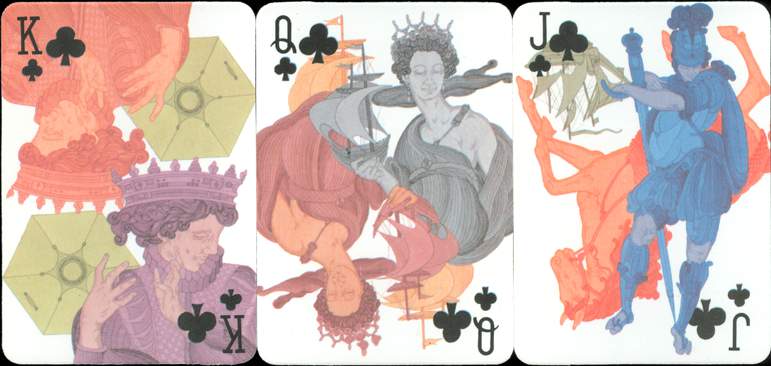
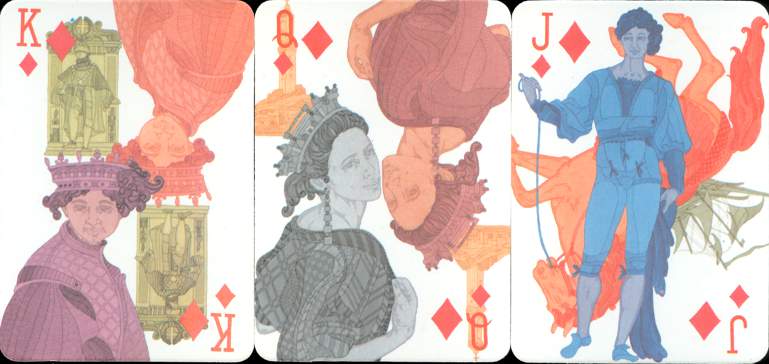
The deck consists of 52 cards, 2 jokers, an extra card with info about the artist in Italian and an extra card with info about this edition, in Italian and English.
The jokers could show Christopher Columbus and his ship, the Santa Maria. But judging by the design it's more likely that the joker presents Rodrigo de Triana, a lookout on the Pinta. Why? He was the one who spotted land about 2 a.m. on the morning of October 12, and immediately alerted the rest of the crew with a shout. Thereupon, the captain of the Pinta verified the discovery and alerted Columbus by firing a canon. Columbus later maintained that he himself had already seen a light on the land a few hours earlier, thereby claiming for himself the lifetime pension promised by Ferdinand and Isabella to the first person to sight land.
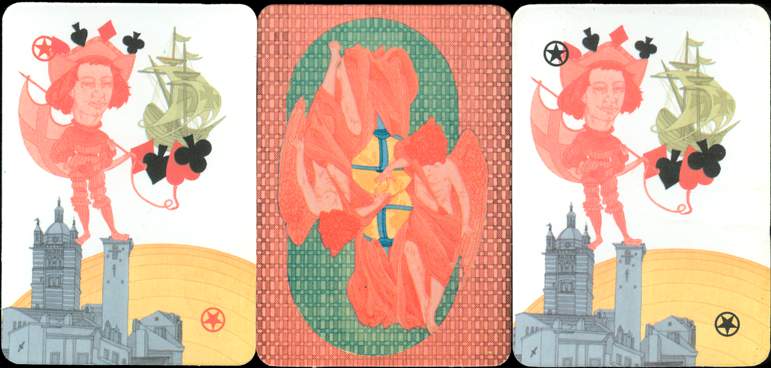
There's another
deck by Pier Canosa in our collection and it's shown in the "Pin-UP &
Erotica" Xpo.
Interested? It's only a CLICK
away!